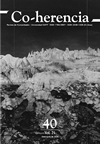Is love still a part of the good life?
Main Article Content
Keywords
Good life, Plato, Symposium love, Modern Age, Capitalism
Abstract
Aristotle has thought about love as an important part of Eudaimonia, the good life, but surprisingly enough it was Plato who provided us with the most significant elaboration for why love would be a part of the good life. This chapter talks only about love in modernity, and begins with Plato's symposium to emphasise the fact that love has been connected to the discourse of virtues. The most striking difference between modern and pre-modern love was the dis-entanglement of love from traditional moral virtues, from moral conceptions of the self and from a social cosmology. At the end of the 19th century, and even more clearly in the 20th century, love underwent an additional change which is that it became associated and even central to a cardinal value of modern people, namely happiness, conceived as a utilitarian project to maximise one's pleasure. The sexualisation of relationships means also that it creates its own autonomous social fields.
Downloads
References
Beck, U. y Beck-Gernsheim, E. (2001). El normal caos del amor. Las nuevas formas de la relación amorosa (D. Schmitz, Trad.). Paidós.
Bellah, R. N. (1989). Hábitos del corazón (G. Gutiérrez, Trad.). Alianza.
Bloch, H. R. (1992). Medieval Misogyny and the Invention of Western Romantic Love. University of Chicago Press.
Flaubert, G. (2012). Madame Bovary (J. Bravo Castillo, Trad.). Austral.
Giddens, A. (1997). Modernidad e identidad del yo. El yo y la sociedad en la época contemporánea (J. L. Gil Aristu, Trad.). Península.
Illouz, E. (2009). El consumo de la utopía romántica. El amor y las contradicciones culturales del capitalismo (M. V. Rodil, Trad.). Katz.
Illouz, E. (2013). Por qué duele el amor. Una explicación sociológica (M. V. Rodil, Trad.). Katz.
Lystra, K. (1989). Searching the Heart. Women, Men, and Romantic Love in Nineteenth Century America. Oxford University Press.
Michael, R. T. (2004). Sexual Capital: An Extension of Grossman’s Concept of Health Capital. Journal of Health Economics, 23(4), 643-652. https://doi.org/10.1016/j.jhealeco.2004.04.003.
Nietzsche, F. (2002). Crepúsculo de los ídolos (A. Sánchez Pascual, Trad.). Alianza.
Rosa, H. (2009). High Speed Society. Social Acceleration, Power, and Modernity. PennState University Press.
Seidman, S. (1991). Romantic Longings. Love in America, 1830-1980. Routledge.
Sennett, R. (2006). La cultura del nuevo capitalismo (M. A. Galmarini Rodríguez, Trad.). Anagrama.
Singer, I. (1999). La naturaleza del amor. 3 El mundo moderno (C. Arizmendi, Trad.). Siglo XXI.
Taylor, C. (2006). Fuentes del yo. La construcción de la identidad moderna (A. Lizón, Trad.). Paidós.
Taylor, C. (2018). Resonance and the Romantic Era. A Comment on Rosa’s Conception of the Good Life. En H. Rosa & C. Henning (Eds.), The Good Life Beyond Growth. New Perspectives (pp. 55-69). Routledge.
Weber, M. (1951 [1915]). The Religion of China: Confucianism and Taoism (H. Gerth Ed. y Trad.). Collier-Macmillan.
Weber, M. (2012 [1918]). La ciencia como vocación. En El político y el científico (5.a ed., pp. 180-231; F. Rubio Llorente, Trad.). Alianza.
Williams, J. (2017). Stoner (A. Díez Fernández, Trad.). Baile del Sol.





